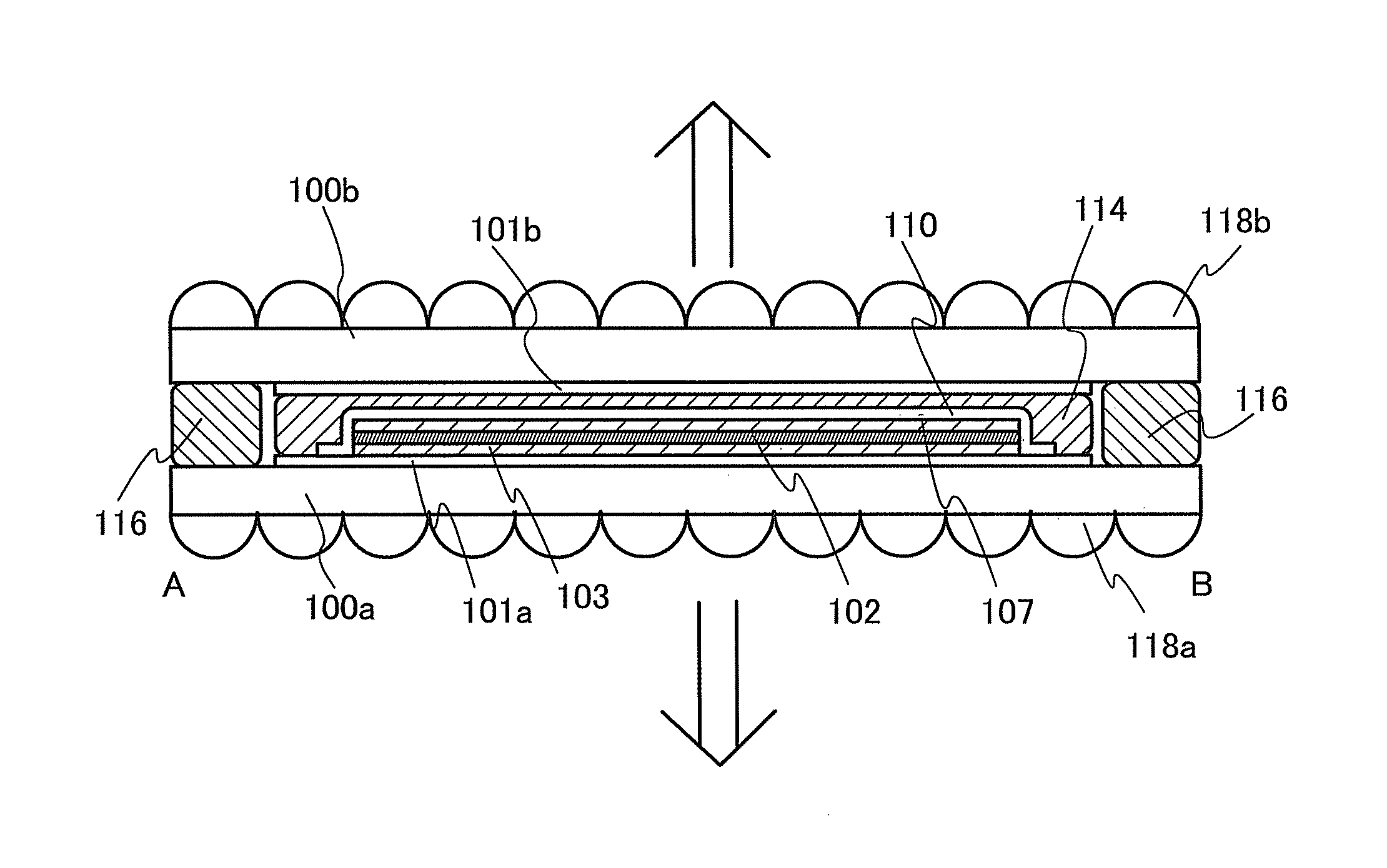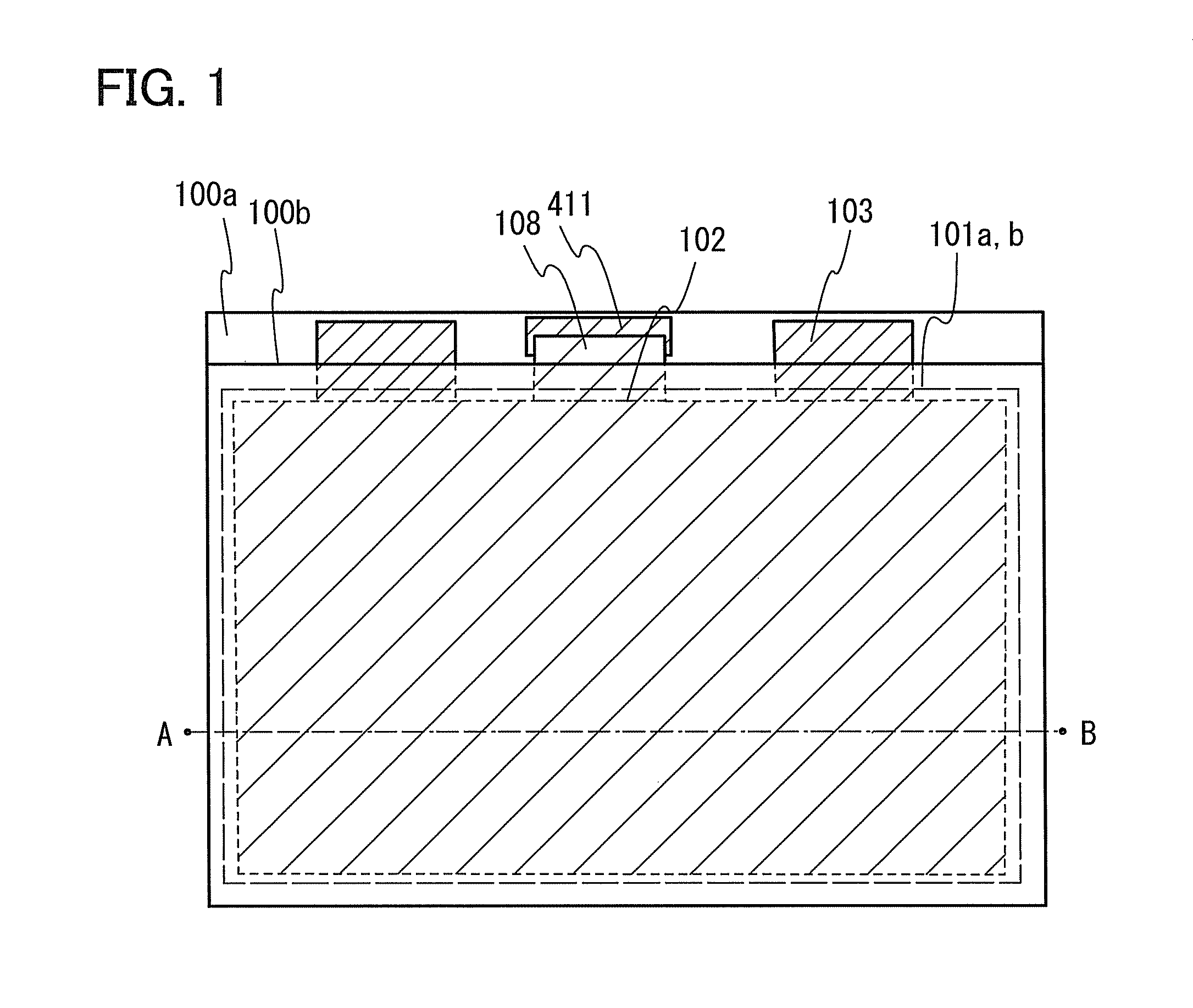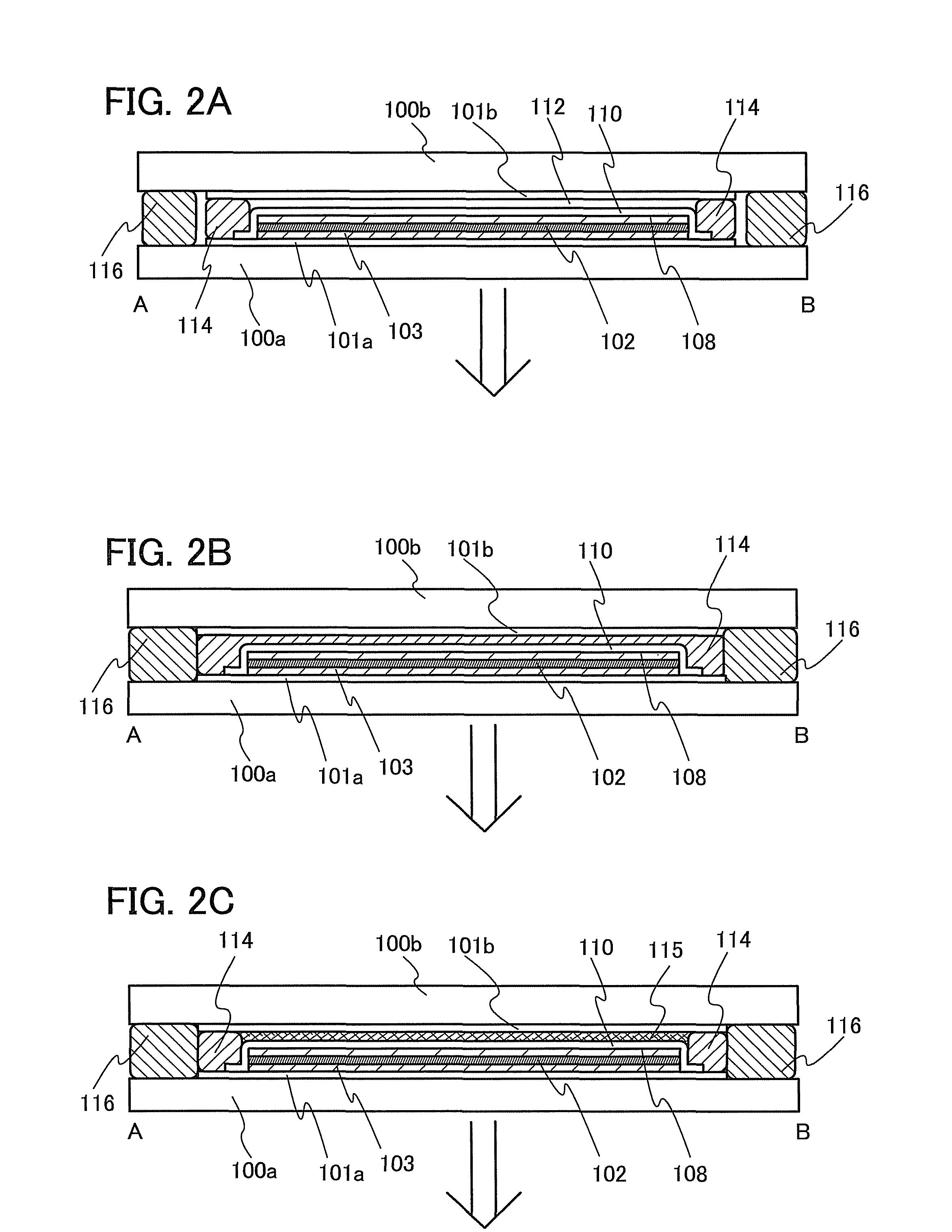Organic light-emitting device and lighting device with organic resin and glass substrate
a light-emitting device and organic resin technology, which is applied in the direction of organic semiconductor devices, solid-state devices, semiconductor lamp usage, etc., can solve the problems of lowering reliability, adversely affecting the lifetime of organic el elements and light-emitting devices in some cases, and achieve high reliability
- Summary
- Abstract
- Description
- Claims
- Application Information
AI Technical Summary
Benefits of technology
Problems solved by technology
Method used
Image
Examples
embodiment 1
[0063]In this embodiment, a light-emitting device according to one embodiment of the present invention will be described with reference to FIG. 1, FIGS. 2A to 2C, FIG. 3, FIG. 4, and FIGS. 5A and 5B.
[0064]FIG. 1 is a plan view of a light-emitting device according to one embodiment of the present invention. Note that in FIG. 1, some components (e.g., a sealant 114 in FIG. 2A and the like) are not illustrated.
[0065]In FIG. 1, a first glass layer 101a is formed over a first organic resin layer 100a, and a light-emitting element (a first electrode 103, an EL layer 102, and a second electrode 108) is formed over the first glass layer 101a. In addition, a second glass layer 101b is formed over the light-emitting element, and a second organic resin layer 100b is formed over the second glass layer 101b.
[0066]The second electrode 108 is connected to a connection electrode 411. The connection electrode 411 can be formed using a material similar to that of the first electrode 103.
[0067]Furthe...
embodiment 2
[0114]In this embodiment, a manufacturing method of a light-emitting device according to one embodiment of the present invention which is described Embodiment 1 will be described with reference to FIGS. 7A to 7E and FIGS. 8A to 8D.
Manufacturing Method 1
Structural Example 1
[0115]One example of a manufacturing method of Structural Example 1 (see FIG. 2A) will be described with reference to FIGS. 7A to 7E.
[0116]First, the first glass layer 101a is formed over the first organic resin layer 100a with the use of an adhesive (FIG. 7A).
[0117]Next, the light-emitting element (the first electrode 103, the EL layer 102, and the second electrode 108) is formed over the first glass layer 101a.
[0118]The first electrode 103 and the second electrode 108 each can be formed by a sputtering method, an evaporation method (including a vacuum evaporation method), or the like. The EL layer 102 can be formed by an evaporation method (including a vacuum evaporation method), an inkjet method, a coating meth...
example 3
Structural Example 3
[0137]In the above manufacturing process of Structural Example 1, the second electrode is formed using a light-transmitting material. In such a manner, Structural Example 3 (see FIG. 4) can be manufactured. The other layers can be formed by forming methods similar to those in Structural Example 1.
PUM
 Login to View More
Login to View More Abstract
Description
Claims
Application Information
 Login to View More
Login to View More - R&D
- Intellectual Property
- Life Sciences
- Materials
- Tech Scout
- Unparalleled Data Quality
- Higher Quality Content
- 60% Fewer Hallucinations
Browse by: Latest US Patents, China's latest patents, Technical Efficacy Thesaurus, Application Domain, Technology Topic, Popular Technical Reports.
© 2025 PatSnap. All rights reserved.Legal|Privacy policy|Modern Slavery Act Transparency Statement|Sitemap|About US| Contact US: help@patsnap.com



